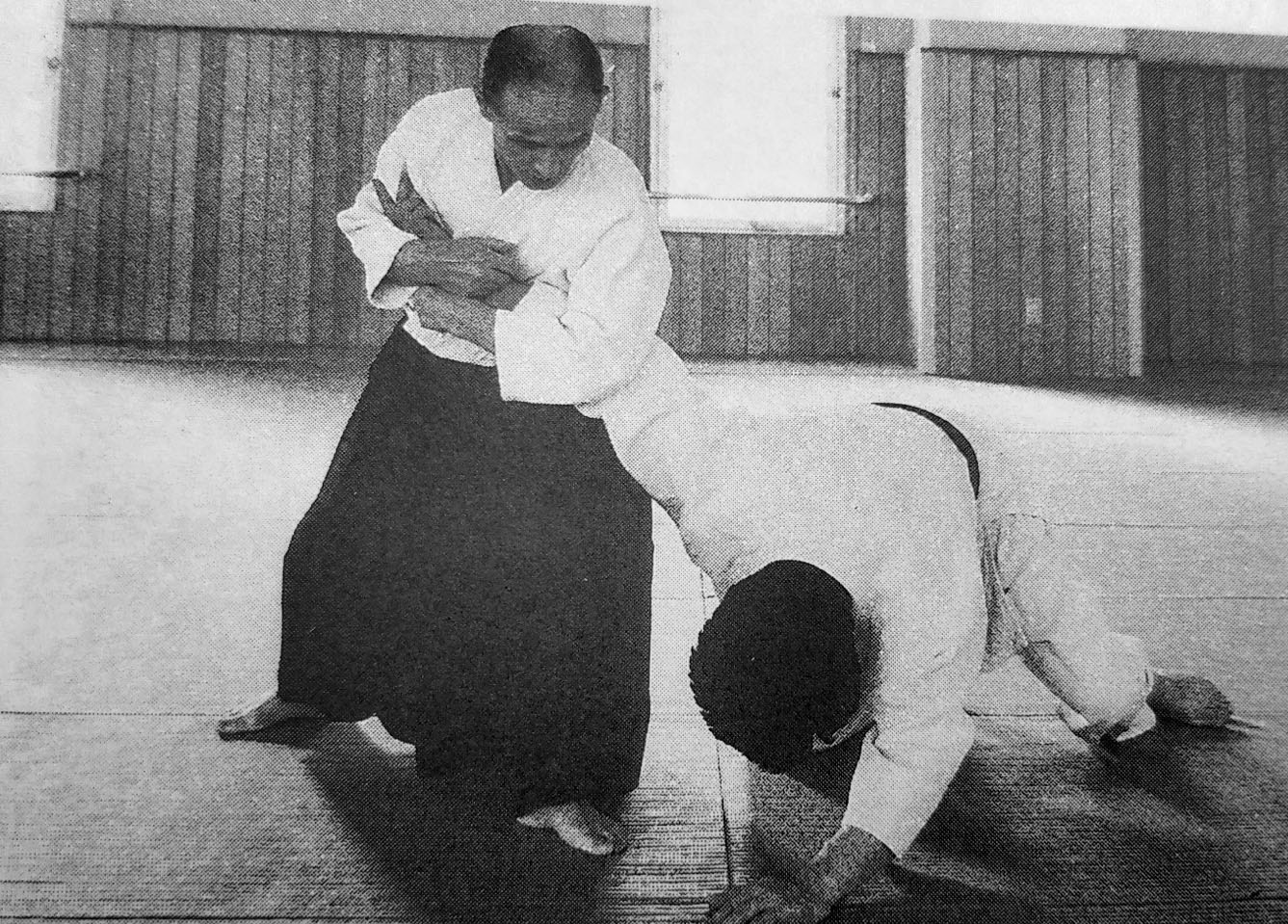

Now let’s take a look at ‘normal’ movement: a step (or, tai sabaki irimi if you will). This means that your weight should be equally distributed among your feet and your center of gravity should be between your feet. Let’s first consider the statement that in Aikido, we strive to move in a balanced and centered manner. This is a bit complicated to explain (which is why it took me longer to write this, also because of my deficient skills in drawing). This has two downsides: you’ve lost mobility and you’ll damage your knees over time. If you can’t, your bending your knee to much. The rule of thumb is that, maintaining correct posture, you have to be able to see your toes from over your knee. Some people tend to bend their knee too much. If you accidentally hunch your shoulders, they’ll come closer together as they drop. Checkpoint: if you raise your hands above your head and let them drop forward, your hands should remain an equal distance apart. If your posture is like most people’s, you should draw back your shoulders a bit. It doesn’t have to be perfectly straight (in fact, that would probably be bad for you), but you should feel some extension there. In Aikido, your posture is supposed to be erect your spine should be stretched out from top to bottom. If you’re leaning into your partner, you’ll fall flat on your face! This is something that becomes obvious when practicing alone, since there’s nothing to lean on.
#AIKIDO TAI SABAKI FULL#
To be clear: full body movement does notmean that you lean into your partner! To understand why this is so, imagine that your partner suddenly disappears in the middle of this exercise. Here’s some ideas to keep in mind while practicing.

And you can develop this sensitivity by practicing alone. In other words: while moving, you have to develop a sensitivity to identify parts of your body that aren’t contributing to your tai sabaki. This means that when practicing tai sabaki, you have to pay attention to body parts that are “ along for the ride”. Again, like in our previous installment of this blog, the implication is that your entirebody moves, not just a couple of disconnected parts. So if your tai sabaki sucks, all your techniques will suck too.Tai sabaki literally means body management, and in Japanese martial arts usually refers to body movement. As you can see here, you’re required to demonstrate a couple of tai sabaki in order to pass your sixth kyu test in our dojo, the first exam you’ll likely take. The fact that tai sabaki is part of the sixth kyu requirements does notmean that it’s easy! Taisabaki is a key component in every Aikido technique. This week we’re going to take a look at our fundamental footwork, in Japanese terms: tai sabaki. It might even be a good idea to do this when we get back to our regular schedule! Even though you’re not going to be able to lock up your training buddies for a while, there’s still plenty you can work on. But does this mean you can’t train? Absolutely not! Although it’s often said it takes two to do Aikido, there are plenty of exercises you can do by yourself. Because of the Corona-virus control measures, there are no Aikido classes at Aikidojo Amsterdam the coming week.


 0 kommentar(er)
0 kommentar(er)
